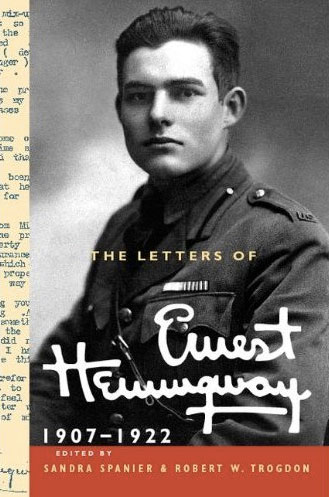 From the lovely illustrated correspondence of Edward Gorey to the touching vintage letters of luminaries on the love of libraries, we’ve previously explored how the uncovered letters of cultural icons set ajar the door to a whole new wonderland of their private selves. Such is the case with The Letters of Ernest Hemingway: Volume 1, 1907-1922 — a fascinating new volume that peels away at a young Hemingway different, richer, more tender than the machismo-encrusted persona we’ve come to know through his published works. After spending a decade sifting through Hemingway’s correspondence, Penn State professor Sandra Spanier collaborated with Kent State University’s Robert W. Trogdon to curate this first in will be a series of at least 16 volumes.
From the lovely illustrated correspondence of Edward Gorey to the touching vintage letters of luminaries on the love of libraries, we’ve previously explored how the uncovered letters of cultural icons set ajar the door to a whole new wonderland of their private selves. Such is the case with The Letters of Ernest Hemingway: Volume 1, 1907-1922 — a fascinating new volume that peels away at a young Hemingway different, richer, more tender than the machismo-encrusted persona we’ve come to know through his published works. After spending a decade sifting through Hemingway’s correspondence, Penn State professor Sandra Spanier collaborated with Kent State University’s Robert W. Trogdon to curate this first in will be a series of at least 16 volumes.
Though Hemingway had articulated to his wife in the 1950s that he didn’t want his correspondence published, his son, Patrick Hemingway, says these letters could dispel the myth of the writer as a tortured figure and distorted soul, a pop-culture image of his father he feels doesn’t tell a complete and honest story.
My principal motive for wanting it to happen was that I think it gives a much better picture of Hemingway’s life than any of his biographers to date […] [My father] was not a tragic figure. He had the misfortune to have mental troubles in old age. Up until that, he was a rather lighthearted and humorous person.” ~ Patrick Hemingway
The letters — lively, quirky, full of doodles and delightfully unusual spellings — cover everything from Hemingway’s childhood in Oak Park, Illinois, to his adventures as an ambulance driver on the Italian front in WWI to the heartbreak of his romance with a Red Cross nurse named Agnes von Kurowsky and his eventual marriage to Hadley Richardson.
From lovers to rivals to his mother, the recipients of the letters each seem to get a different piece of Hemingway, custom-tailored for them not in the hypocritical way of an inauthentic social chameleon but in the way great writers know the heart, mind, and language of their reader. The letters thus become not only a tender homage to this unknown Hemingway, revealing new insights into his creative process along the way, but also a bow before the lost art of letter-writing itself.
via The Chronicle of Higher Education
(Via Brain Pickings.)
No comments:
Post a Comment